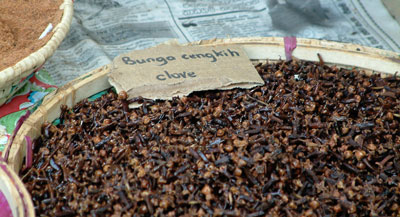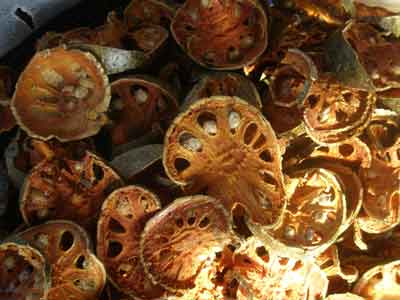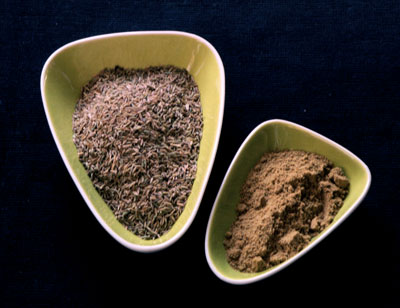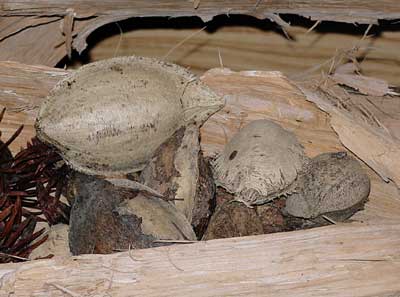
Cloves. The unopened flower buds of a tree, dried in the sun. They are very aromatic and widely used in Indian cooking.

Bael fruit; a close relative of the citrus. The fruit is about the size of, and has the appearance of a greyish-yellow orange with a thin woody rind. The floury pulp is pale orange in colour and has numerous seeds. Dried slices are soaked and boiled and the resulting liquid sweetened and drunk. Used for medicinal purposes.

Bael fruit; a close relative of the citrus. The fruit is about the size of, and has the appearance of a greyish-yellow orange with a thin woody rind. The floury pulp is pale orange in colour and has numerous seeds. Dried slices are soaked and boiled and the resulting liquid sweetened and drunk. Used for medicinal purposes.

Cumin seeds. The white seeds are commonly used. It is a musty smelling spice, the flavour of which is improved by roasting or frying.

Tropical almond. The fruit looks similar to the almond and is usually pale green, though it may be reddish-purple. There is a fibrous seed containing a pointed kernel, or nut. It can be eaten fresh and raw, or cooked. It is sometimes difficult to remove the fibrous seed without damaging the nut. There is a thin covering of skin on the nut, and it is worth removing it as it can be very astringent. It is much prized in the Moghul cooking of northern India, they are eaten fresh or used in badam barfi, fudge-like sweets, or used to thicken sauces in dishes such as korma. They are grown in Kashmir and Afghanistan as they do not grow well in tropical regions. Elsewhere, cashew and other nuts are substituted.